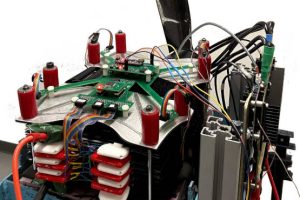Specifically, it highlights that its Radioisotope Thermoelectric Generator (RTG) has successfully completed its extreme vibration test campaign, proving the resilience that would be required for a rocket launch.
Space battery
The Space Nuclear Power group – a team at the University of Leicester and its £100 million science park Space Park Leicester – have been investigating power systems that use the heat generated from the decay of radioisotopes. These can be used to provide heat to spacecraft, or converted to electricity to power key subsystems.
For example it has recently been working with ispace to develop such a system for the Japanese space company’s lunar rover.
The RTG uses americium as the active element to provide stable power outputs, potentially for many decades. RTGs that use americium perform better in cold environments which makes them suitable for missions targeting icy moons or shadowed regions of planetary surfaces, highlighted the university.
“This was a critical milestone for the team and the system,” said Dr Ramy Mesalam, the technical lead on the project, commenting on the latest tests. “The performance exceeded all expectations and this will enable us to accelerate the migration to a mission application.”
Nuclear power
The Space Nuclear Power group at the University of Leicester has been developing radioisotope power systems for over a decade.
It has previously explained:
“These power systems use the heat generated from the decay of radioisotopes, and can be used to provide heat to spacecraft, or converted to electricity to power key subsystems. The technology development has been funded by the European Space Agency (ESA) European Devices Using Radioisotope Energy (ENDURE) program, which has been heavily supported by the UK Space Agency.”
Image: Airbus/ESA – The Lunar Polar Explorer Rover concept with hybrid power system architecture (solar arrays + RTG). The RTG at the back of the rover is coupled to the thermal bus for extended exploration of permanently shadowed regions and night-time survival on the lunar surface.
 Electronics Weekly Electronics Design & Components Tech News
Electronics Weekly Electronics Design & Components Tech News




